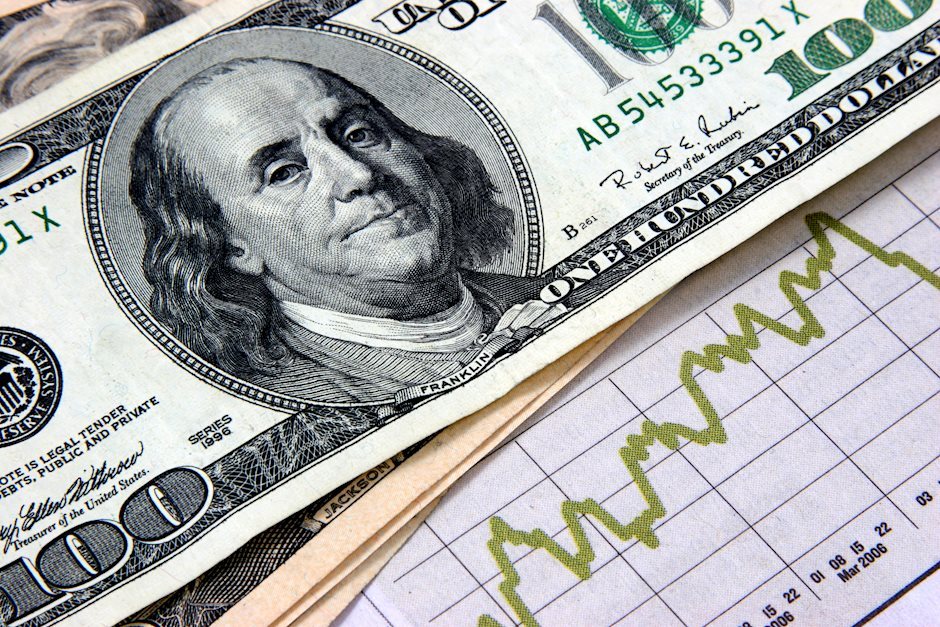US Dollar resumes gains, investors await economic data
- The US Dollar sees some gains, while markets continue looking for clues on the Fed’s next steps.
- Several Federal Reserve members will speak on Monday afternoon.
- Fed’s Beige Book, S&P figures and Initial Jobless Claims will be closely followed this week.

The US Dollar Index (DXY), which measures the value of the USD against a basket of six currencies, is slightly higher at the start of the week, supported by safe-haven flows amid geopolitical tensions. Some Federal Reserve (Fed) members are scheduled to speak later on Monday, and their comments will be closely watched for any clues on the Fed's monetary policy stance.
Daily digest market movers: US Dollar gains on Middle East tensions and Fed comments
- The US Dollar remains steady, inching up slightly due to escalating geopolitical tensions in the Middle East and supportive comments from Federal Reserve officials.
- However, profit-taking dampens the Greenback's gains as investors react to positive economic data from China and the government's stimulus package.
- Economic activity figures in this week’s S&P data on Thursday might shake the USD, as well as those in the Fed’s Beige Book report on Wednesday.
- Markets continue to bet on higher odds of two cuts in what remains of 2024.
DXY technical outlook: DXY momentum might have hit its ceiling
The DXY index is facing resistance at the 200-day Simple Moving Average (SMA). Despite resuming the gains, the momentum may not be enough to conquer it. Both the Relative Strength Index (RSI) and the Moving Average Convergence Divergence (MACD) have flattened in positive territory, indicating a pause in buying momentum with the latter still in overbought territory.
As a result, the index may struggle to regain the 200-day SMA and may instead consolidate sideways in the near term.
Central banks FAQs
Central Banks have a key mandate which is making sure that there is price stability in a country or region. Economies are constantly facing inflation or deflation when prices for certain goods and services are fluctuating. Constant rising prices for the same goods means inflation, constant lowered prices for the same goods means deflation. It is the task of the central bank to keep the demand in line by tweaking its policy rate. For the biggest central banks like the US Federal Reserve (Fed), the European Central Bank (ECB) or the Bank of England (BoE), the mandate is to keep inflation close to 2%.
A central bank has one important tool at its disposal to get inflation higher or lower, and that is by tweaking its benchmark policy rate, commonly known as interest rate. On pre-communicated moments, the central bank will issue a statement with its policy rate and provide additional reasoning on why it is either remaining or changing (cutting or hiking) it. Local banks will adjust their savings and lending rates accordingly, which in turn will make it either harder or easier for people to earn on their savings or for companies to take out loans and make investments in their businesses. When the central bank hikes interest rates substantially, this is called monetary tightening. When it is cutting its benchmark rate, it is called monetary easing.
A central bank is often politically independent. Members of the central bank policy board are passing through a series of panels and hearings before being appointed to a policy board seat. Each member in that board often has a certain conviction on how the central bank should control inflation and the subsequent monetary policy. Members that want a very loose monetary policy, with low rates and cheap lending, to boost the economy substantially while being content to see inflation slightly above 2%, are called ‘doves’. Members that rather want to see higher rates to reward savings and want to keep a lit on inflation at all time are called ‘hawks’ and will not rest until inflation is at or just below 2%.
Normally, there is a chairman or president who leads each meeting, needs to create a consensus between the hawks or doves and has his or her final say when it would come down to a vote split to avoid a 50-50 tie on whether the current policy should be adjusted. The chairman will deliver speeches which often can be followed live, where the current monetary stance and outlook is being communicated. A central bank will try to push forward its monetary policy without triggering violent swings in rates, equities, or its currency. All members of the central bank will channel their stance toward the markets in advance of a policy meeting event. A few days before a policy meeting takes place until the new policy has been communicated, members are forbidden to talk publicly. This is called the blackout period.
Author

Patricio Martín
FXStreet
Patricio is an economist from Argentina passionate about global finance and understanding the daily movements of the markets.

















